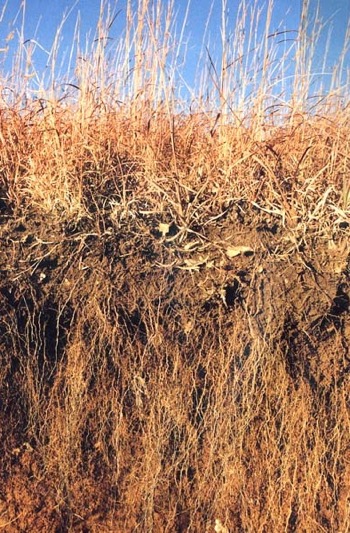Turning the conventional wisdom on its head, Janine Benyus, author of Biomimicry: Innovation Inspired by Nature and founder of the Biomimicry Institute, argued that carbon dioxide pollution in the atmosphere can become the source of a new, regenerative agricultural system.
Instead of treating carbon dioxide emissions as a waste product that needs to be reduced, it can instead fuel our food production. We can mimic the functions of prairie ecosystems to store all of that excess CO2 and create a more sustainable food production system.
“Nature has no landfills; everything has a second life,” Benyus argued. Carbon dioxide is already the basis of a complex system of “upcycling” in nature. A tree absorbs carbon dioxide, sequestering it as it grows. When it dies, it’s decomposing trunk is taken over by fungi, which consume the carbon. This fungi is then eaten by voles, which are then eaten by owls, and on the cycle goes.
We can help nature improve its ability to bio-sequester carbon. “We can undertake carbon farming in nature’s image.” This requires moving towards “ecosystem-inspired agricultural practices,” or “biomimetic agriculture.”
Restoring the natural ecosystem functions of grasslands, as well as forests, has other benefits. A firm in Australia has created a natural septic system based in soil profiles. In this system, clean water eventually percolates back up to the surface. Benyus thinks growing demand for organic food can help restore natural agriculture systems’ bio-sequestration function.
Benyus said these are the “elegant solutions” we need. Her new book, Ubiquity, will look at these solutions that “use life’s principles to guide social innovation.”

